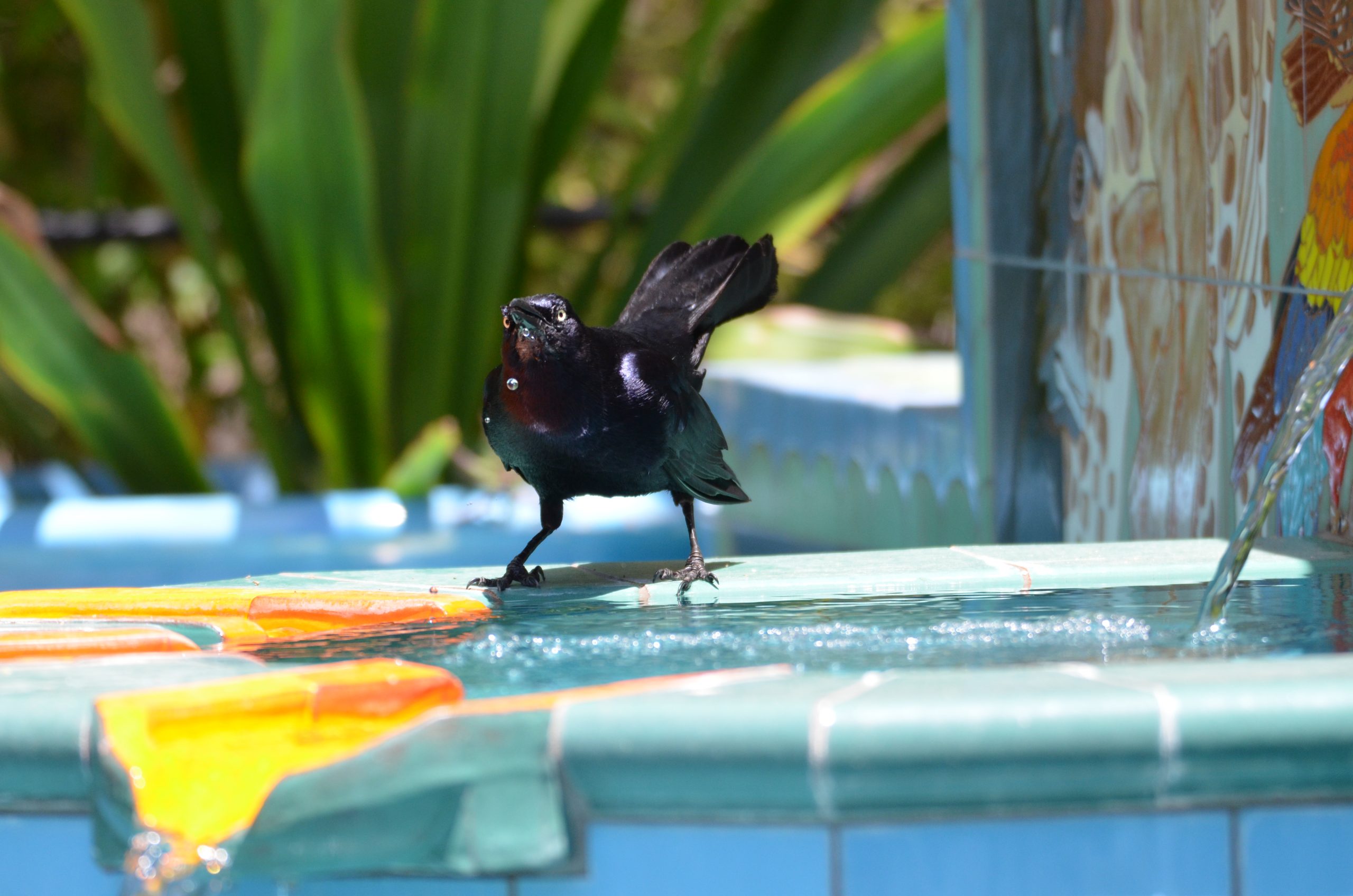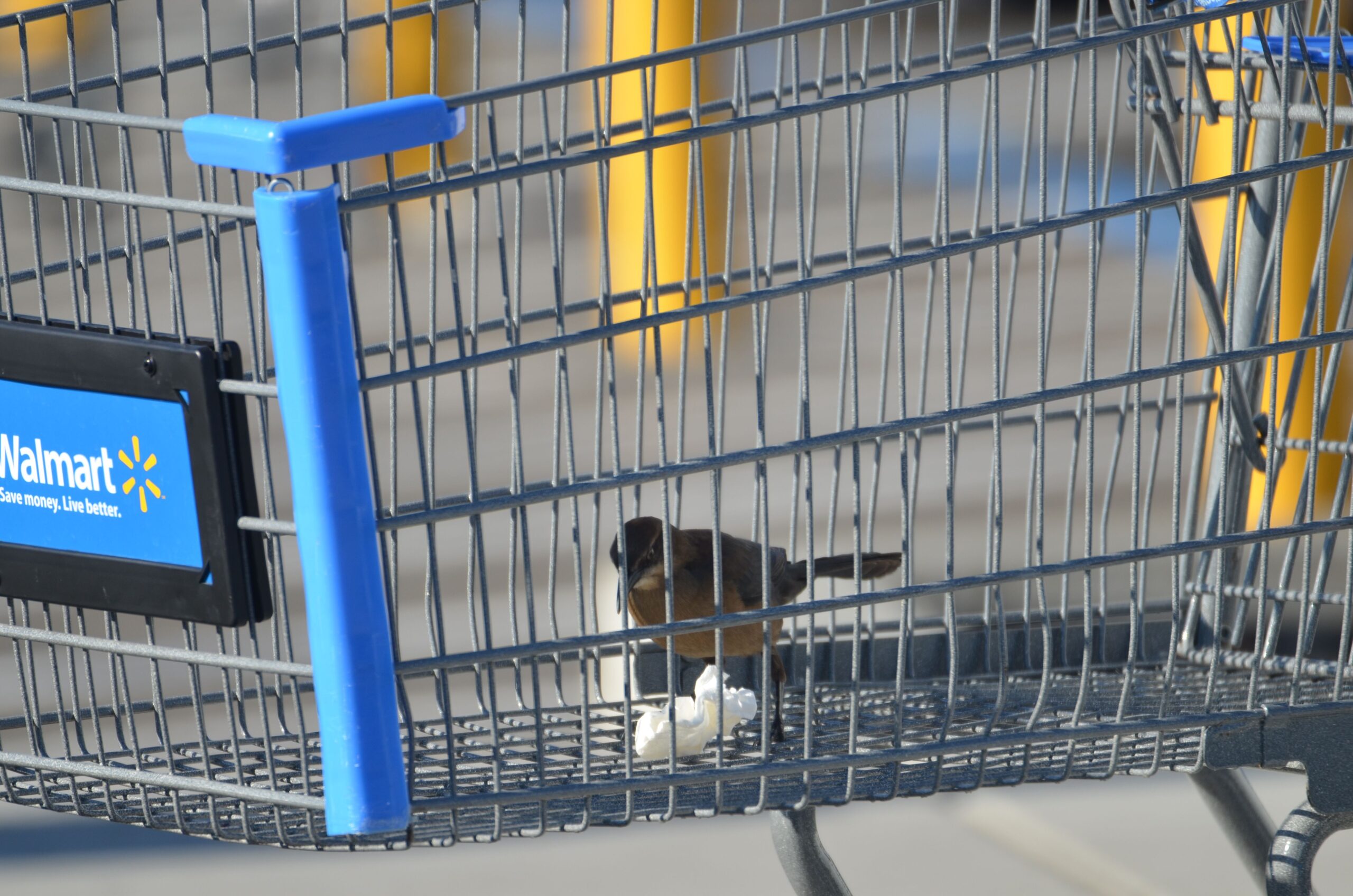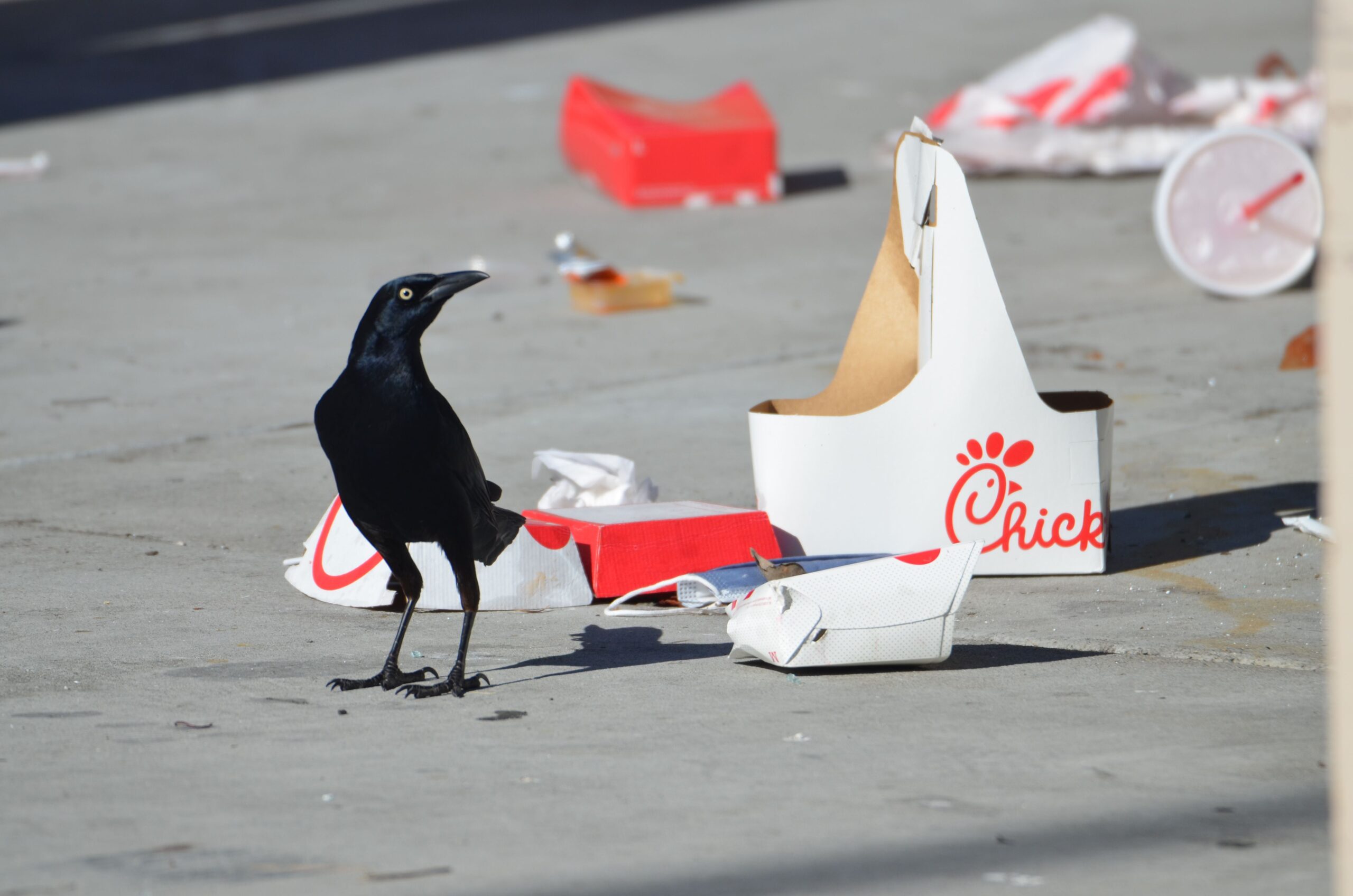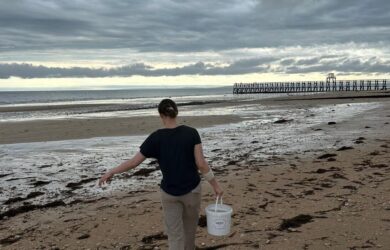
Corina Logan leads research investigating whether increasing flexibility can help birds adapt to human-induced environmental change
Usually when people attempt to train endangered species to survive better in the wild, they train one behaviour like predator mobbing, which doesn’t appear to generalise to changing other behaviours that might also help these individuals succeed
Dr Corina Logan
Researchers have discovered a trait in certain urban birds that may enable them to adapt to – and possibly be trained to adapt to – human-induced environmental change.
The researchers from the Max Planck Institute of Evolutionary Anthropology and the University of California Santa Barbara, led by Gates Cambridge Scholar Dr Corina Logan [2008], studied a successful urban bird species and found that a trait related to adapting to environmental changes, behavioural flexibility, is manipulable and improves problem solving and flexibility in a new context.
The research is published in two new articles this month in Peer Community Journal and PeerJ. The researchers are also launching a new project, ManyIndividuals, to determine whether they can train threatened species to be more flexible and whether this helps them succeed in human-modified environments such as urban centres.
Behavioural flexibility is manipulable and impacts other abilities
The researchers found that they could train great-tailed grackles, a successful urban bird species, to be more flexible using a method called serial reversal learning, where grackles are given the option to look in two differently coloured containers for food. They must first learn that only one colour of container has food. Once they prefer this colour, the food is then placed in the container of the other colour until they learn to reverse their colour preference. Researchers then continue to reverse the location of the food over and over until grackles learn to quickly change their colour preference after each reversal.

Afterwards, these trained grackles solved more options on a different test involving a puzzlebox (they were more innovative), and they were also faster to switch between the puzzlebox options (they were more flexible). “The grackles are so good at finding ways to break our experiments and challenge our expectations that I really didn’t think the flexibility manipulation was going to work,” says Dr Logan who leads the grackle research at the Max Planck Institute of Evolutionary Anthropology and whose work is based on her PhD at the University of Cambridge where she was a Gates Cambridge Scholar. Not only did the manipulation work, it had an impact on other cognitive abilities, which the authors had hoped for.
Behavioral flexibility is thought to be a primary facilitator for adapting to human-modified environments. “Humans are changing the environment so rapidly that species are not able to adapt quickly enough to the new environments through natural selection. But it’s possible that animals could alter their behaviour to some extent through learning to help increase survival,” says Dr Kelsey McCune at the University of California Santa Barbara who helped run the grackle research.
“Usually when people attempt to train endangered species to survive better in the wild, they train one behaviour like predator mobbing, which doesn’t appear to generalise to changing other behaviours that might also help these individuals succeed,” says Logan. That Logan, McCune, and colleagues were able to manipulate flexibility in great-tailed grackles who are highly successful in human-modified environments and that this training affected other behaviours creates an exciting foundation for applying this to threatened species.
ManyIndividuals: how to survive in human-modified environments
Logan and McCune have teamed up with Dr Rachael Shaw at Victoria University of Wellington to launch a new project called ManyIndividuals. They aim to train both threatened and successful species to be more flexible and determine whether this training increases their ability to succeed in human-modified environments. “Now that we’ve validated this method for training individuals to be more flexible in a species that is doing well with human-induced environmental change, I am excited to apply it to endangered species that could really benefit from increased flexibility”, says McCune.

Their field research is focused on conducting these experiments in the wild, which is not often done because it is trickier than in captivity – it requires creative experiments and technology. “Research on wild populations is crucial to understand whether behavioural-based interventions like this could help threatened birds in New Zealand’s urban environments, as cities pose unique challenges for survival”, says Shaw. Dr McCune investigates endangered Florida scrub-jays, as well as jay species that are doing well in human-modified environments, Dr Shaw researches the threatened toutouwai, endemic to New Zealand and recently reintroduced into city-based sanctuaries, while Dr Logan will continue with the successful urban great-tailed grackles.
ManyIndividuals: a reproducible research programme
The ManyIndividuals project is modeled after the ManyX collaborative projects (for example, ManyBabies and ManyPrimates), which conduct the same tests using the same methods in a variety of different labs and populations to make the research reproducible. This helps increase sample sizes, makes the results comparable and allows researchers to determine whether the results generalise to broader contexts.
ManyIndividuals is designed as a reproducible research programme where others can replicate the process of conducting the research as well as the actual experiments (details at https://github.com/ManyIndividuals/ManyIndividuals/). The planned ManyIndividuals experiments are published as a registered report that was peer reviewed and received In Principle Acceptance at Peer Community in Registered Reports (http://corinalogan.com/ManyIndividuals/mi1.html). Any researcher is welcome to use and replicate these experiments and analyses in their study populations.
*Watch the birds in action here.











